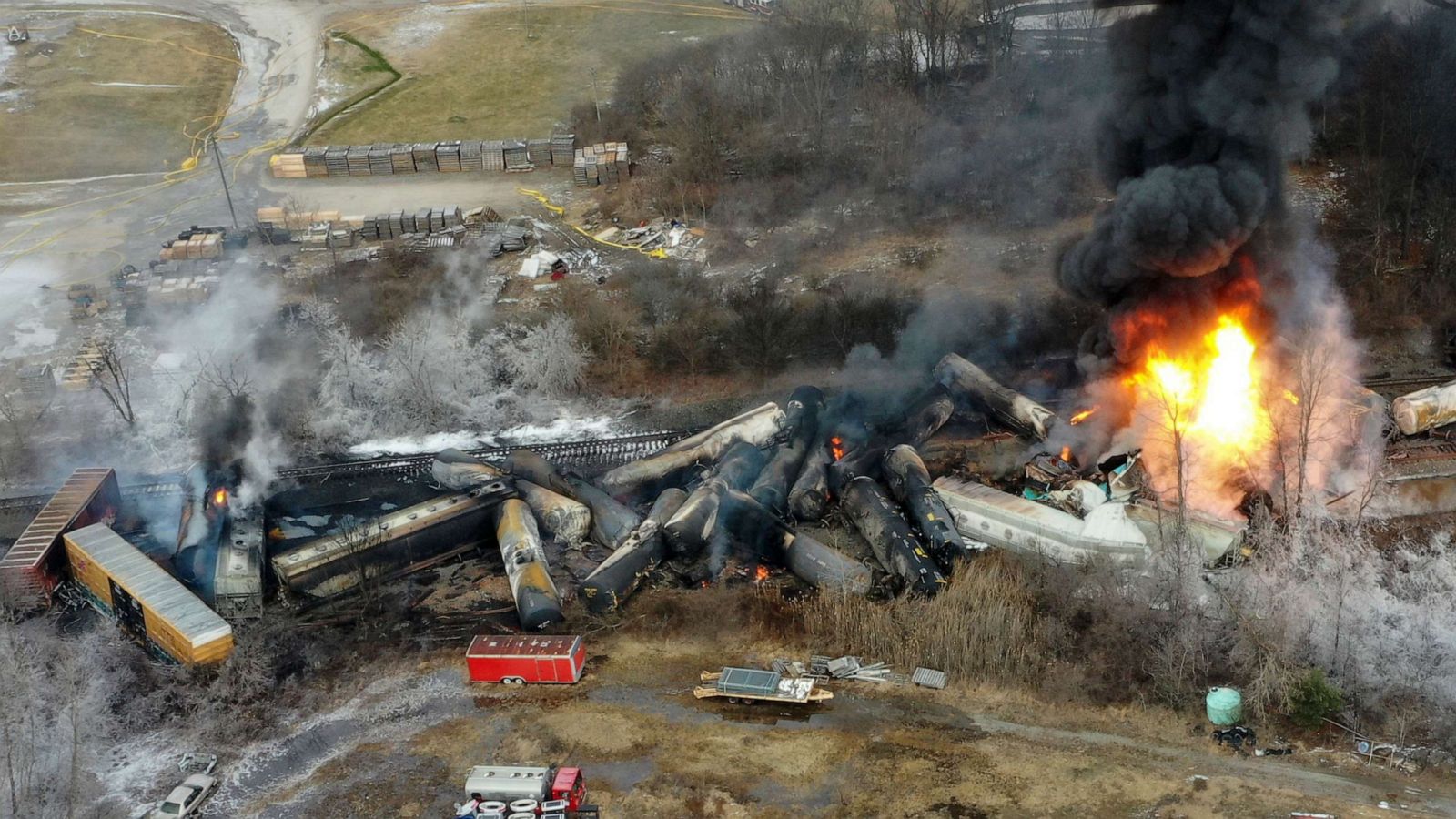The National Transportation Safety Board (NTSB) has recently made a decision regarding the toxic burn-off that was planned in response to a train derailment in Ohio. The NTSB has deemed the burn-off unnecessary, citing potential risks to public health and the environment.
The derailment, which occurred on a remote stretch of track in a rural area, resulted in several cars carrying hazardous materials catching fire. The initial plan to conduct a burn-off was met with concern from local residents and environmental groups, who feared that the burning of toxic materials could release harmful chemicals into the air and water supply.
In light of these concerns, the NTSB conducted a thorough investigation and determined that alternative methods of containment and cleanup could be employed without the need for a burn-off. This decision has been met with relief from the community and environmental advocates, who are pleased that their voices were heard and that a safer solution has been found.
The NTSB’s decision highlights the importance of considering all potential risks and consequences before taking action in response to a disaster or emergency situation.

NTSB’s Findings on the Ohio Train Derailment
The National Transportation Safety Board (NTSB) recently released their findings on the Ohio train derailment that occurred last month. According to the NTSB, the derailment was caused by a combination of factors, including track defects and excessive speed. The investigation revealed that the train was traveling at a speed that was higher than the recommended limit for that section of track, which ultimately led to the derailment.
Additionally, the NTSB found that the track had not been properly maintained, with several defects identified that could have contributed to the accident. The NTSB also noted that the train operator failed to properly adhere to safety protocols and procedures, which may have played a role in the derailment.
Overall, the NTSB’s findings highlight the importance of adhering to safety regulations and conducting regular maintenance on railway tracks to prevent accidents and ensure the safety of both passengers and crew. The NTSB has recommended that the train company take immediate action to address the issues identified in their investigation to prevent future accidents and improve safety measures for all trains operating in the area.

Assessing the Decision to Burn Toxic Chemicals
When considering the decision to burn toxic chemicals, it is important to thoroughly assess the potential consequences and impacts on the environment and public health.Burning toxic chemicals can release harmful pollutants into the air, soil, and water, leading to negative health effects for individuals and ecosystems. It is crucial to weigh the potential benefits of burning toxic chemicals, such as reducing waste volume or disposing of hazardous materials, against the potential risks and harm it may cause.
Additionally, alternative methods of disposal or treatment should be explored to minimize the need for burning toxic chemicals. It is important to consult with experts in environmental science and public health to fully understand the implications of burning toxic chemicals and to make informed decisions that prioritize the well-being of both people and the environment.
Ultimately, the decision to burn toxic chemicals should be made with careful consideration of the potential impacts and a commitment to protecting human health and the environment.
Impact of the Burn-Off on the Environment and Public Health
The burn-off process can have significant consequences on both the environment and public health. When vegetation is burned, it releases harmful pollutants into the air, such as carbon monoxide, particulate matter, and volatile organic compounds.
These pollutants can contribute to poor air quality, leading to respiratory problems, cardiovascular issues, and other health problems in nearby communities. In addition, the burning of vegetation can also lead to the destruction of habitats for wildlife, loss of biodiversity, and increased risk of wildfires. The impact of burn-offs on the environment can be long-lasting, with burned areas often taking years to recover and regenerate.
Furthermore, the smoke produced by burn-offs can also have a negative impact on air quality, leading to visibility issues and potentially exacerbating existing health conditions. It is important for individuals and organizations to consider the potential consequences of burn-offs on both the environment and public health before engaging in this practice. Alternative methods of land clearing and vegetation management should be explored to minimize the negative impact on the environment and public health.

Response from Local Communities and Officials
The response from local communities and officials to various issues can vary greatly depending on the circumstances. In some cases, community members may come together to address a problem or support a cause that they feel strongly about. This can be seen through community clean-up efforts, fundraising events, or advocacy campaigns.
Local officials may also take action by implementing policies or programs to address concerns raised by the community. For example, officials may allocate funding for infrastructure improvements, create task forces to address specific issues, or work with community organizations to provide services to residents in need.
The collaboration between local communities and officials can be vital in addressing challenges and creating positive change within a community. By working together, both parties can leverage their resources and expertise to find innovative solutions to complex problems.
Additionally, the relationship between local communities and officials can help build trust and foster a sense of unity among residents. Ultimately, the response from local communities and officials can have a significant impact on the well-being and development of a community, as they work together to address issues and create a better quality of life for all residents.
